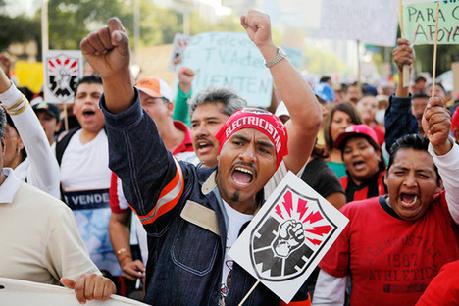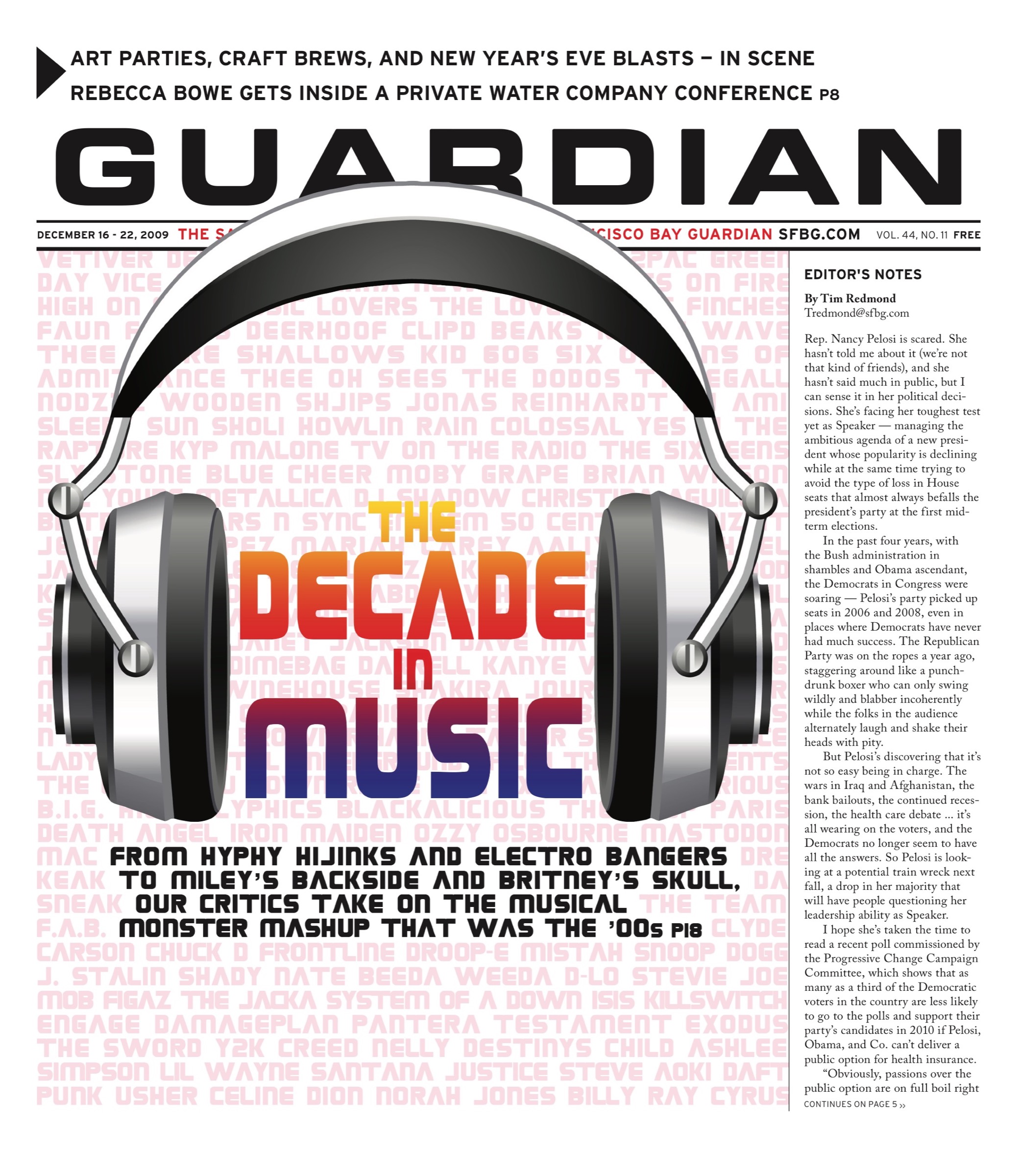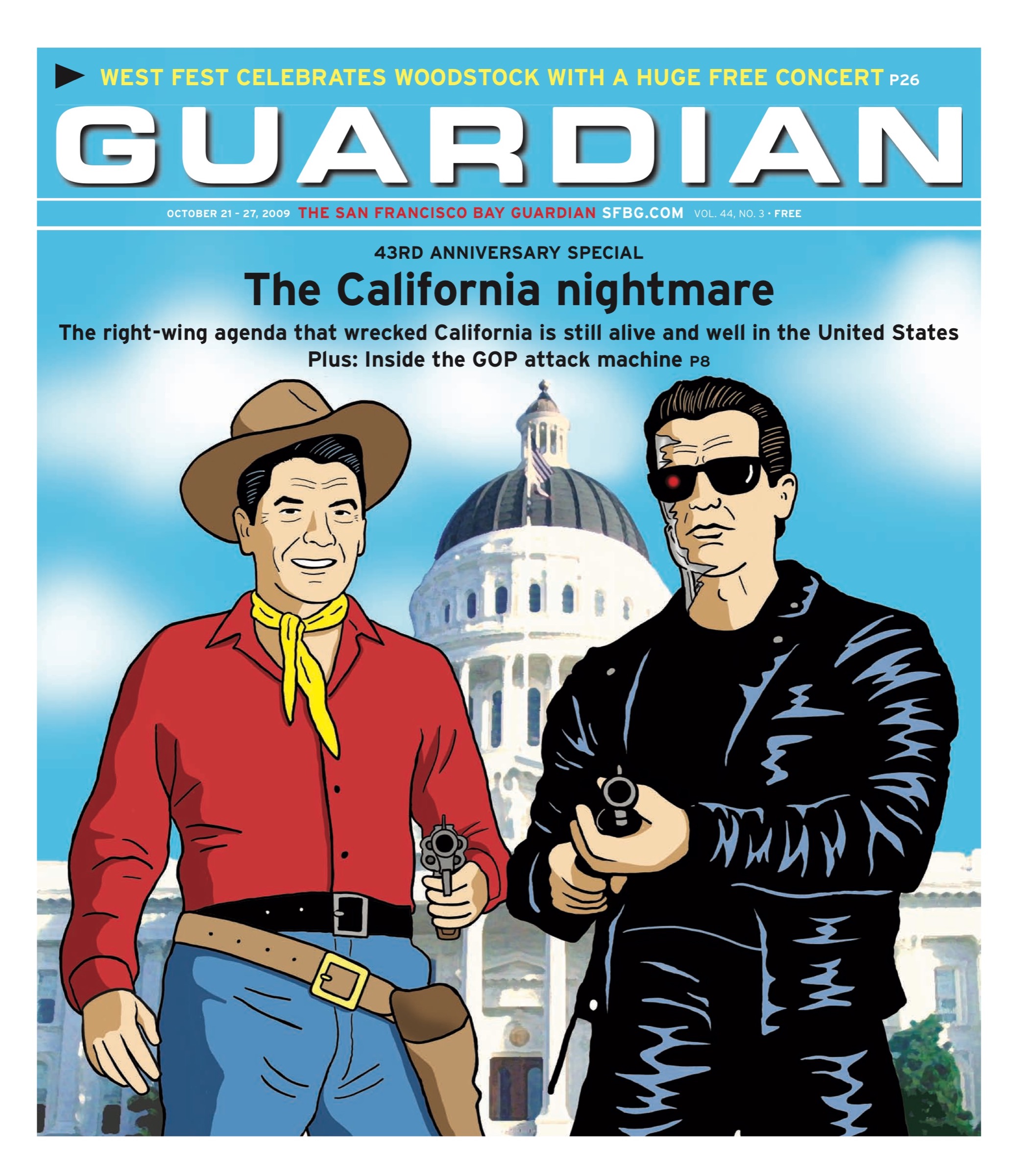news@sfbg.com
The most painful and divisive city budget season in many years was just getting under way as this issue went to press, with dueling City Hall rallies preceding the June 16 Board of Supervisors vote on an interim budget and the board’s Budget and Finance Committee slated to finally delve into the 2009-10 general fund budgets on June 17.
Both sides have adopted the rhetoric of a life-or-death struggle, with firefighters warning at a rally and in an advertising campaign that any cuts to their budget is akin to playing Russian Roulette, while city service providers say the deep public health cuts proposed by Mayor Gavin Newsom will also cost lives and carry dire long-term costs and consequences.
Despite Newsom’s pledges in January and again on June 1 to work closely with the Board of Supervisors on budget issues, that hasn’t happened. Instead, Newsom’s proposed budget would decimate the social services supported by board progressives, who responded by proposing an interim budget that would share that pain with police, fire, and sheriff’s budgets — which Newsom proposed to increase.
Rather than simply adopting the mayor’s proposed budget as the interim spending plan for the month of July, as the board traditionally has done, progressive supporters proposed an interim budget that would make up to $82 million in cuts to the three public safety agencies and use that money to prevent the more draconian cuts to social services.
“It’s the start of a discussion to figure out what that number should be. I don’t know where we’re going to end up,” Sup. David Campos, who sits on the budget committee, told us.
Board President David Chiu said Newsom did finally meet with him and Budget Committee chair John Avalos on June 15 to try to resolve the impasse. But he said, “We didn’t hear anything from the mayor that would change where we were last week.” They planned to meet again on June 19.
“What we proposed represents the magnitude of the challenge we face this year,” Chiu said of the interim budget proposal, seeming to indicate that supervisors are open to negotiation.
The real work begins the morning of June 17 when the Budget and Finance Committee dissects the budgets of 15 city departments, including the Mayor’s Office, of which Avalos told us, “I don’t think the mayor has made the same concessions as he’s had other departments make.”
The next day, another 13 city departments go under the committee’s microscope, including the public safety departments that were spared the mayor’s budget ax and even given small increases, and the budget of the Public Defenders Office, where Newsom proposes cutting 16 positions.
“This creates a severe imbalance in the criminal justice system,” Public Defender Jeff Adachi told us. “Why is he cutting public defender services while fully funding police, fully funding the sheriff’s department, and essentially creating a situation where poor people are going to get second-rate representation?”
That theme of rich vs. poor has pervaded the budget season debate, both overtly and in budget priorities that each side is supporting.
BUDGET JUSTICE
Hundreds of people whose lives would be affected by cuts marched on City Hall under the banner Budget Justice on June 10. Some of San Francisco’s most vulnerable citizens, including homeless people, immigrants, seniors, and public housing residents, turned out for the march, chanting and waving signs asking the mayor to “invest in us.”
Sups. John Avalos and Chris Daly delivered resounding speeches mirroring the anger in the crowd, and promised to fix the budget by reallocating money to protect the city’s safety net. Daly charged that even as services to the city’s vulnerable populations are being slashed, “the politically connected and the powerful get huge increases.”
Avalos took the podium just before heading into City Hall to lead the Budget and Finance Committee meeting and implored the hundreds of people gathered out front to make their voices heard. “Mayor Newsom, he told us, he said, ‘We have a near-perfect budget.’ Do we have a near-perfect budget?” Avalos asked, and then paused while the crowd cried out, “Nooo!!!!!”
During an interview discussing Newsom’s budget priorities, Avalos twice made references to The Shock Doctrine, using the Naomi Klein book about how crises are used as opportunities to unilaterally implement corporatist policies. “We have a budget deficit that is real, but it’s being used to do other things,” Avalos said. “I look at it as a way to remake San Francisco. It’s a Shock Doctrine effect.”
He referred to the privatization of government services (an aspect of every Newsom budget), promoting condo conversions and gentrification, defunding nonprofits that provides social services (groups that often side with progressives), and helping corporations raid the public treasury (Newsom proposed beefing up the Mayor’s Office of Economic and Workforce Development by a whopping 32 percent).
“It’s things that the most conservative parts of San Francisco have wanted for years, and now they have the conditions to make it happen,” Avalos said.
Much of that agenda involves slashing services to the homeless and other low-income San Francisco and de-funding the nonprofit network that provides services and jobs. “There’s an effort to say nonprofit jobs aren’t real jobs, but they are an important economic engine of the city,” Avalos told us. Those cuts were decried during the June 10 budget rally.
“What people don’t realize,” Office & Professional Employees International Union Local 3 representative Natalie Naylor said, “is that everything that’s being proposed to be cut from the city is creating no place for homeless people to go during the daytime. I don’t think Newsom’s constituents realize that we’re going to see more homeless people on the street than ever before.”
Pablo Rodriguez of the Coalition on Homelessness told the crowd that he was furious that the mayor would make such deep cuts to social services. “Stop riding on the back of the homeless, and the seniors and the children and all the community-based organizations,” Rodriguez said. “Why make the poor people pay for the rich people’s mistakes? The poor people didn’t make the mistakes.”
WHOM TO CUT?
The public safety unions were equally caustic in their arguments. An announcement for the Save Our Firehouses rally — which was heavily promoted by members of the Mayor’s Office and Newsom’s gubernatorial campaign team — claimed that “the Board of Supervisors voted to endanger the progress that we’ve made in public safety by laying off hundreds of police officers, closing up to 12 out of 42 fire stations and closing part of our jail.”
Actually, all sides have said the interim budget probably won’t lead to layoffs, station closures, or prisoner releases, but those could be a part of next year’s budget.
Tensions temporarily cooled a bit in the days that have followed, but the two sides still seemed far apart on their priorities, mayoral spin aside. Asked about the impasse, Newsom spokesperson Nate Ballard told the Guardian, “The mayor has already included over 90 percent of the supervisors’ priorities in the budget. But he’s against the supervisors’ efforts to gut public safety. He’s willing to work with people who have reasonable ideas to balance the budget. Balancing the budget with draconian cuts to police and fire is unreasonable.”
Campos disputed Ballard’s figure and logic. “I don’t know where that number comes from,” Campos said. “A lot of the things we wanted to protect, the mayor cut anyway.”
Campos said Newsom’s slick budget presentation glossed over painful cuts to essential services, cuts that activists and Budget Analyst Harvey Rose have been discovering over the last two weeks. “I felt the mayor has done a real good job of presenting things to make it look like it’s not as bad as it really is,” Campos said.
COMMITTEE WORK
Avalos expressed confidence that his committee will produce a document to the full board in July that reflects progressive priorities.
“We’re going to pass to the full board a budget that we have control over,” Avalos said, noting that a committee majority that also includes Sups. Campos and Ross Mirkarimi strongly favors progressive budget priorities.
He also praised the committee’s more conservative members, Sups. Bevan Dufty and Carmen Chu, as engaged participants in improving the mayor’s budget. “I think the tension on the committee is healthy.”
Ultimately, Avalos says, he knows the board members can alter Newsom’s budget priorities. But his goal is to go even further and develop a consensus budget that creatively spreads the pain.
“Ideally, I want a unanimous vote on the Board of Supervisors,” Avalos said.
In the current polarized budget climate, that’s an ambitious goal that may be out of reach. But there are some real benefits to attaining a unanimous board vote, including the ability to place revenue measures on the November ballot that can be passed by a simply majority vote (state law generally requires a two-third vote to increase taxes, but it makes provisions for fiscal emergencies, when a unanimous Board of Supervisors vote can waive the two-thirds rule).
Avalos has proposed placing sales tax and parcel tax measures on the fall ballot. Other proposals that have been discussed by a stakeholder committee assembled by Chiu include a measure to replace the payroll tax with a new gross receipts tax and general obligation bond measures to pay for things like park and road maintenance, which would allow those budget expenses to be applied elsewhere.
But Avalos said Newsom will need to step up and show some leadership if the measures are going to have any hope of being approved. “To get the two-thirds vote we need to win a revenue measure in this bad economy is going to be really hard,” Avalos said.
“The mayor is open to new revenue measures as long as they include significant reforms and are conceived and supported by a wide swath of the community including labor and business,” Ballard said.
Sup. Sean Elsbernd — one of the most conservative supervisors — has repeatedly said he won’t support new revenue measures unless they are accompanied by substantial budget reforms that will rein in ballooning expenditures in areas like city employee pensions.
“Pension reform. Health care reform. Spending reform. One of the above. A combination of the above,” Elsbernd told the Guardian when asked what he wants to see in a budget revenue deal.
Avalos says he’s mindful that not every progressive priority can be fully funded as the city wrestles with a budget deficit of almost $500 million, fully half the city’s discretionary budget. “It’s a crappy situation, and we can make it just a crummy situation.”







